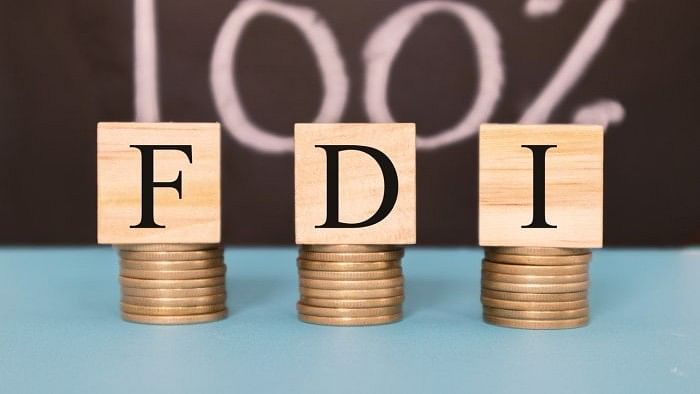
FDI inflow as a percentage of GDP too has dwindled consistently in the past three years.
Credit: iStock Photo
New Delhi: India’s share in the global foreign direct investments (FDI) shrunk to 2.1 per cent in 2023 from a high of 6.5 per cent recorded in 2020, even as the nature of the overseas funds inflows in terms of sectors and states remained skewed, India Ratings and Research (Ind-Ra) said on Sunday.
According to the World Investment Report 2024 by UN Trade and Development (UNCTAD), India slipped to the 16th position in attracting FDIs in 2023 from the eighth position in 2022.
FDI inflow as a percentage of GDP too has dwindled consistently in the past three years. It fell from 3.06 per cent in FY 2020-21 to 1.99 per cent in 2023-24. During the financial year 2021-22 it stood at 2.68 per cent and in 2022-23 at 2.13 per cent. In 2013-14 it stood at 1.94 per cent, data analysed by rating agency Ind-Ra showed.
As a proportion of gross fixed capital formation (GFCF), the share of FDI decreased from 11.22 per cent in 2020-21 to 6.45 per cent in 2023-24, which is nearly the same as recorded in 2013-14 when it stood at 6.20 per cent.
The foreign funds inflows remain concentrated in a few states in western, southern and northern parts of the country. Out of the total FDI inflows in India during the period October 2019 to March 2024, nearly half (49.5 per cent) went to just two states Maharashtra and Gujarat.
Four states in the southern part of India – Karnataka, Tamil Nadu, Andhra Pradesh and Telangana – attracted 30.3 per cent of the total FDI inflows during the period under review while NCR Delhi and Haryana in the north attracted 17.8 per cent.
“Concentration of FDI in a few states suggests that better infrastructure (physical and human) and growth potential are key preconditions to attract higher FDI,” said Devendra Kumar Pant, Chief Economist, India Ratings and Research.
“The states which have evolved their economic policies around the broader national-level economic policies are able to take advantage and attract higher FDI inflows and thus there are better growth prospects for these state economies,” he added.
Eight states/UTs – Maharashtra, Gujarat, Karnataka, Tamil Nadu, Andhra Pradesh, Telangana, Haryana and Delhi NCR – attracted 94.6% of the total FDI inflows in India during October 2019 – March 2024 period. The FDI inflows to these states are disproportionately higher than their gross state domestic product (GSDP). The combined GSDP of the eight above mentioned states stood at 55.5 per cent of the total during the year 2022-23.
Eastern India, despite being rich in mineral resources, has lagged behind in attracting FDI. Only Jharkhand (1.1 per cent) and West Bengal (0.7 per cent) were able to attract some FDI in the eastern region.
“However, with the increased infrastructure spending by the union and state governments post FY22, the medium-term outlook is positive for FDI inflows,” India Ratings and Research said in the research note.
The FDI inflow in India is also sectorally skewed. The service sector hogged 40.9 per cent of the FDI inflows in the decade between FY15 to FY24, rising from the 37 per cent it got between FY01 to FY14, making it the biggest recipient of the foreign funds. Within services, FDI has majorly flowed into sectors such as trading, telecommunications, banking/insurance, IT/business outsourcing and hotels/tourism.
FDI country comparison
Manufacturing sector accounted for 25.1 per cent of the total FDI during the period FY15 to FY24. Within manufacturing, it has remained concentrated in segments such as automobiles, chemicals, drugs and pharmaceuticals, metallurgical, electrical equipment, and food processing.
“While India has set an ambitious target of increasing the share of manufacturing in GDP at 25 per cent, it has limited success in attracting higher FDI in the sector,” said Paras Jasrai, Senior Analyst, India Ratings and Research.
The National Manufacturing Policy, 2011 had set a target to increase the share of manufacturing in GDP to 25 per cent within a decade and create 100 million jobs. However, these targets remain elusive.
FDI Sectoral Distribution
“India aspires to be a developed economy by the turn of century of India’s Independence; hence, a buoyant manufacturing sector is important both from the point of view of stable growth and to generate employment in the country,” said Jasrai.